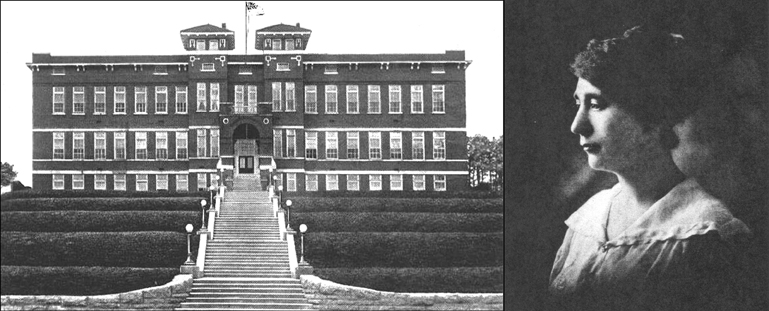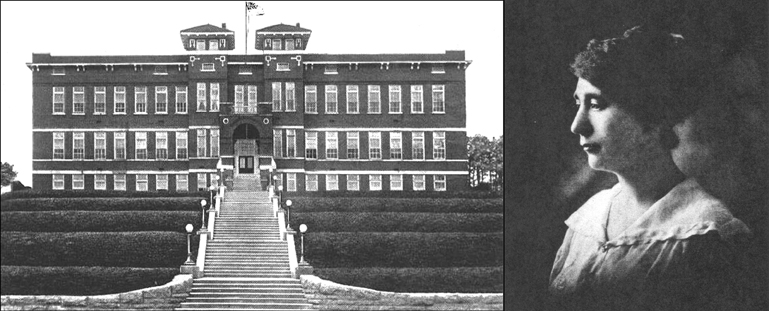Science Hill High School, once located downtown on “The Hill” at Roan and Water streets, opened its 1922-23 school year with plans to establish several “modern methods.” The director of the project was Miss Lucy Hatcher, the principal.

(Science Hill circa 1922 and Miss Lucy Thatcher, principal of the school that year.)
The changes were aimed at keeping the school “up to date” and promoting increased student interest in their schoolwork. Funding was achieved by scheduling radio concerts in the evenings at the school auditorium and from proceeds from the senior class’s moneymaking activities.
Daily instructional sessions began at the school at 2 p.m. thereby reducing the students’ lunch breaks to 20 minutes. Specifics of the meetings were not disclosed.
The cafeteria was supplied with an assortment of groceries and additional equipment that was deemed necessary for the cooking and serving of well-balanced lunches. Miss Edith Basket, domestic science teacher, was put in charge of the cafeteria and was challenged with buying quality food at the best prices obtainable to feed nearly 400 students.
The first Monday’s menu after the school opened that year consisted of four different selections of sandwiches, milk and lemonade, bananas and chocolate candy. The dining room was spruced up with a set of fumed oak furniture, a new set of silverware and new linen for use in home economics for teaching girls how to properly serve dinners.
Miss Hatcher installed a “radio outfit” in the study hall for the entertainment of students. A large Victorola phonograph and a set of records were also purchased for teaching American and English literature.
Students began publishing a high quality monthly magazine, known as The Wataugan. The last edition for the school year became the annual, also known as The Wataugan.
The Rotary Club provided a model for the best lecture during the coming year at an oratorical contest sponsored by the high school. This subject was regarded as one of the most important ones in the high school, as evidenced by the fact that a delegation of students had been sent each year for the previous 10 years to the grand contest at Emory and Henry College. They won the prestigious grand metal several times.
Shrubbery was planted around the high school and grounds that year. Miss Hatcher made over $60 selling books that were donated by students who left the high school the previous year. The money was used for miscellaneous needs of the school.
Miss Hatcher was a unique administrator. She maintained absolute control over her students with very little effort. When the situation required it, she could reverse her friendly but firm demeanor with piercing and icy eyes that often rained sarcasm down on her unfortunate student victim.
On one humorous occasion in 1920, the senior class decided to liven things up at school by scheduling a secret “Tacky Day,” which meant wearing the oldest, gaudiest and most mismatched clothing they could locate. When the day arrived, students sheepishly congregated at the foot of the steps. Before they could ascend the 88 steps to the school, their stern and visibly upset principal confronted them and immediately expelled them.
Hatcher was infuriated because the students, deliberately or otherwise, chose the very day that William Jennings Bryan was to visit Johnson City and the high school. The distinctively different assemblage was reluctant to go home so they remained on the school steps. When Mr. Bryan arrived, the surprised popular politician was surprised about their attire. The quick thinking principal explained that they were a group of country folks hanging around to get a glimpse of the famous politician.

Comments are closed.